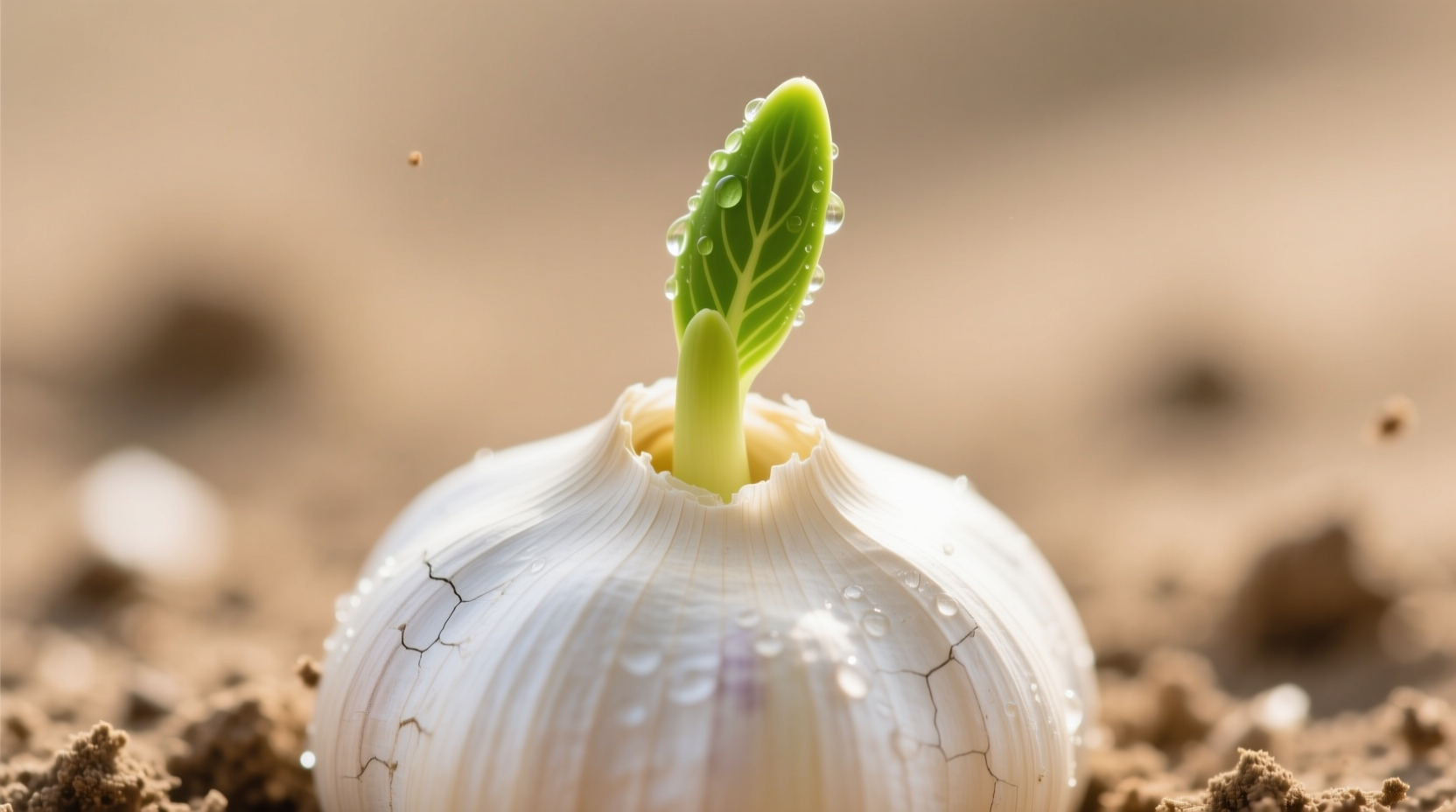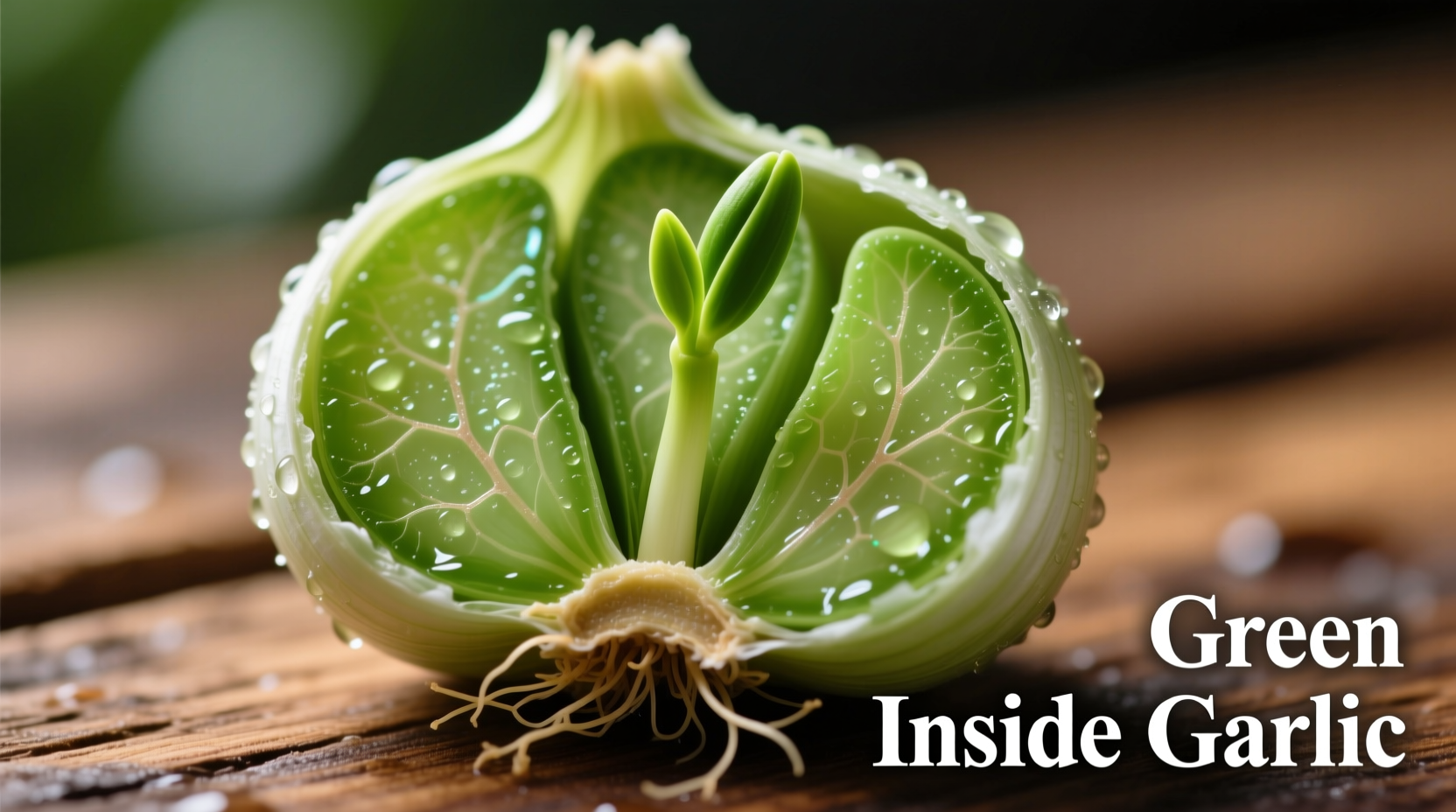If you've discovered green sprouts or discoloration inside your garlic cloves, you can safely eat it—though the green sprout itself may taste slightly bitter. This natural sprouting process occurs when garlic is exposed to light and warmth, signaling the beginning of new plant growth. Simply remove the green shoot for optimal flavor, and store remaining garlic properly to extend freshness.
Have you ever peeled a garlic clove only to find an unexpected green shoot running through its center? This common kitchen discovery often triggers immediate concerns about food safety and quality. As a culinary professional who's handled thousands of garlic bulbs throughout my career, I can assure you this green growth is completely natural and generally harmless. In fact, it's a sign of fresh, high-quality garlic beginning its next growth cycle—not spoilage.
What Causes the Green Sprout in Garlic?
That slender green shoot emerging from your garlic clove is actually a nascent plant preparing for growth. When garlic bulbs experience conditions mimicking spring—moderate temperatures and exposure to light—the dormant clove activates its natural reproductive process. This biological phenomenon, called vernalization, triggers the formation of a chlorophyll-rich sprout that will eventually develop into a new garlic plant.
Unlike mold or bacterial growth which indicates spoilage, this green sprout represents vitality. Garlic stored in cool, dark conditions typically remains dormant for months, but once exposed to kitchen environment conditions, the cloves begin preparing for their next growth phase. The sprout develops from the clove's basal plate—the flat end where roots would normally grow—and gradually extends through the center of the clove.
| Normal Sprouting | Actual Spoilage |
|---|---|
| Crisp, firm cloves with green center shoot | Mushy, slimy texture throughout |
| Pleasant garlic aroma | Sour, unpleasant odor |
| White to pale yellow flesh surrounding green shoot | Extensive black, blue, or fuzzy mold growth |
| Intact papery skin | Decomposed, disintegrating skin |
Is Garlic with Green Sprouts Safe to Eat?
According to food safety experts at the USDA and university extension services, garlic with central green sprouts remains perfectly safe for consumption. The sprout itself contains higher concentrations of certain compounds that can impart a slightly bitter flavor, but it poses no health risks. In fact, many traditional Mediterranean and Asian cuisines intentionally use sprouted garlic for specific dishes where its milder, more complex flavor profile is desirable.
The University of California Agriculture and Natural Resources confirms that sprouting represents a natural biological process rather than spoilage. Their research shows that sprouted garlic maintains comparable nutritional value to non-sprouted cloves, with some studies even suggesting increased antioxidant activity during the early sprouting phase.

How Sprouting Affects Garlic Flavor and Quality
While safety isn't a concern, the presence of that green shoot does impact your culinary experience. As the sprout develops, it draws nutrients from the surrounding clove, gradually reducing the garlic's characteristic pungency. Many professional chefs describe sprouted garlic as having a more subtle, slightly sweet flavor profile compared to its fully dormant counterpart.
Here's the sprouting timeline and its flavor implications:
- Stage 1 (0-3 days): Tiny green dot appears at the clove's center - minimal flavor impact
- Stage 2 (4-7 days): Visible green shoot (1-2 cm) - slight bitterness in the sprout only
- Stage 3 (1-2 weeks): Extended green shoot (3+ cm) - noticeable bitterness throughout the clove
- Stage 4 (3+ weeks): Significant nutrient transfer - clove becomes softer with diminished garlic flavor
Practical Tips for Using Sprouted Garlic
When you encounter sprouted garlic in your kitchen, follow these professional techniques to maximize flavor:
- Remove the green shoot: Using the tip of a knife, gently split the clove lengthwise and extract the green sprout. This simple step eliminates any potential bitterness while preserving the clove's characteristic flavor.
- Adjust cooking methods: Sprouted garlic benefits from gentler cooking techniques. Try roasting whole sprouted bulbs to mellow any bitterness and develop complex sweetness.
- Use promptly: Sprouted garlic has a shorter shelf life than dormant bulbs. Incorporate it into your cooking within 3-5 days for best results.
- Consider the dish: Sprouted garlic works particularly well in dishes where a milder garlic flavor is desirable, such as salad dressings, mayonnaise-based sauces, or delicate vegetable preparations.
Preventing Garlic from Sprouting
Understanding why garlic sprouts helps prevent it. Garlic enters dormancy after harvest, but certain conditions trigger its growth cycle:
- Temperature fluctuations: Exposure to temperatures between 40-70°F (4-21°C) encourages sprouting
- Light exposure: Direct or even ambient light stimulates growth hormones
- Moisture levels: High humidity accelerates the sprouting process
For optimal storage that prevents premature sprouting:
- Keep garlic in a cool, dark place with good air circulation (not the refrigerator)
- Use mesh bags or open baskets rather than sealed containers
- Maintain temperatures between 60-65°F (15-18°C) with 60-70% humidity
- Store away from onions, which release gases that accelerate sprouting
For long-term storage, consider freezing peeled cloves in olive oil or creating garlic-infused vinegar—both methods preserve flavor while preventing sprouting.
When Sprouting Signals Actual Spoilage
While green sprouts themselves indicate vitality, certain conditions warrant discarding your garlic. Recognize these critical boundaries:
- Garlic that has developed extensive mold growth beyond the central sprout
- Cloves with soft, mushy texture or unpleasant sour odor
- Bulbs showing signs of blue or black discoloration throughout the cloves
- Garlic that has been stored in oil at room temperature for more than 4 days
The National Center for Home Food Preservation emphasizes that garlic stored in oil requires special attention due to botulism risks. Always refrigerate garlic-in-oil mixtures and use within one week.
Maximizing Your Garlic Experience
Embrace sprouted garlic as part of your culinary journey rather than discarding it unnecessarily. By understanding this natural process, you'll reduce food waste while expanding your flavor repertoire. Remember that slight bitterness from the green shoot is easily remedied by simple removal, and many professional kitchens actually seek out lightly sprouted garlic for specific applications where its milder profile shines.
Whether you're preparing a classic French aioli, crafting authentic Thai curry paste, or simply enhancing weeknight dinners, knowing how to handle sprouted garlic ensures you always make the most of this versatile kitchen staple. With proper storage techniques and understanding of garlic's natural lifecycle, you'll enjoy optimal flavor and minimize waste in your culinary adventures.











 浙公网安备
33010002000092号
浙公网安备
33010002000092号 浙B2-20120091-4
浙B2-20120091-4